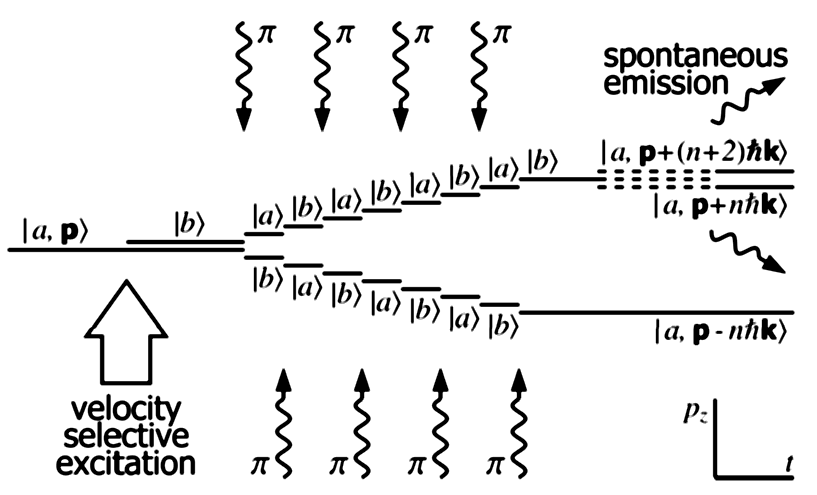Welcome
Research
dipole forces
stim. scattering
coherent control
Literature
People
Join us!
Contacts
Teaching
Useful links
Stimulated scattering
|
The initial stages of confinement and cooling are addressed by coherent implementations of the ‘scattering force’, whereby emission is stimulated before it occurs spontaneously: thus, even where some spontaneous relaxation remains necessary, it is still greatly diluted. Strategies have been identified for stimulated focussing and deflection; interferometric, algorithmic and pulsed Doppler cooling; and coherent amplification therein (shown to the right). These processes switch population between states through fractional Rabi cycles (the sinusoidal exchanges of population between radiatively-coupled states) using carefully prepared ‘π-pulses’, but may be refined by exploiting chirped adiabatic passage to improve the efficiency and tolerance of variations in laser intensity. The broad bandwidth of many of these pulsed schemes allows simultaneous access to a range of molecular states. Any coherent sequence of manipulations shares much with the process of quantum computation, and our algorithmic cooling scheme follows the observation that the momentum states of a manipulated atom or molecule behave as a quantum computer. Besides providing a new cooling mechanism, this hints at a more general method of designing fields for coherent manipulation, while its practical implementation could complement NMR systems as a testbed for experimental quantum computation. |

Coherent amplification of conventional Doppler cooling increases the useful impulse achieved for each spontaneous event. |

School of Physics and Astronomy, University of Southampton
Highfield, Southampton, SO17 1BJ, United Kingdom
Tel: +44 (0)23 8059 2093, Fax: +44 (0)23 8059 3910